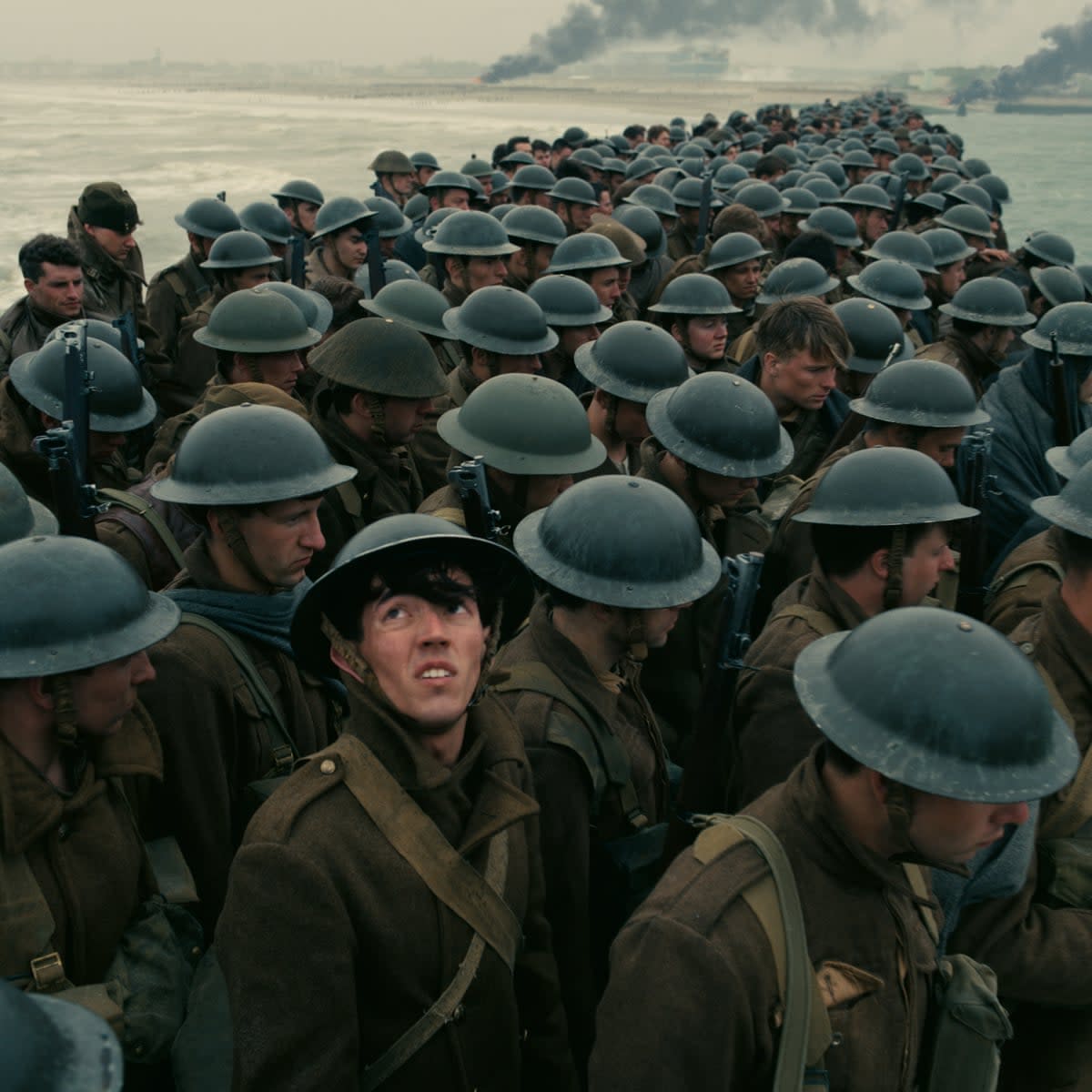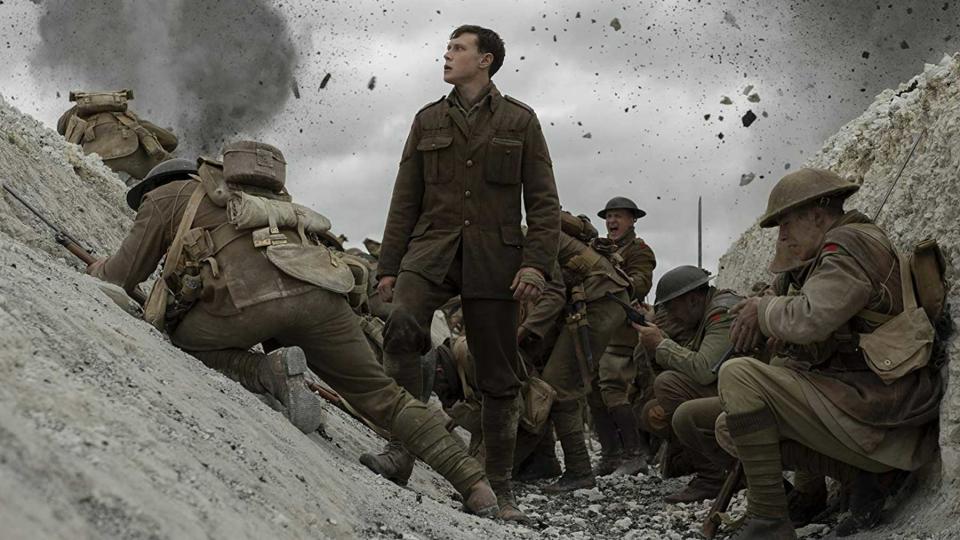Will 'all-white male' movies like '1917,' 'Dunkirk' be shut out of Oscars with new diversity guidelines? Not likely.

The Academy hasn’t generated this much debate with an announcement since that hair-brained, short-lived plan to introduce a “Best Popular Film” category.
The organization whipped social media into a frenzy Tuesday when it announced new diversity guidelines mandating that films fulfill two of four requirements in order to be eligible for the Oscars top Best Picture prize. The inclusion standards focus on (A) onscreen representation, themes and narratives, (B) creative leadership, (C) industry access and opportunities and (D) representation in marketing, publicity and distribution. (They’re well worth reading in full before rushing to judgment here.)
While the Academy has generally received accolades for the initiative from pundits and cinephiles, Kirstie Alley, James Woods and their followers are very, very upset. (Ironically, the people most outraged about the Oscars changes were probably not even watching the Oscars anyway.)
Change starts now. We've announced new representation and inclusion standards for Best Picture eligibility, beginning with the 96th #Oscars. Read more here: https://t.co/qdxtlZIVKb pic.twitter.com/hR6c2jb5LM
— The Academy (@TheAcademy) September 9, 2020
One very prevalent concern from both sides of the aisle that’s emerged, however is that “white male war movies” like 1917 (2019) and Dunkirk (2017) — very necessary, oftentimes very excellent historical documents — would thus be branded cinema-non-grata because of their onscreen lack of diversity. The Academy’s A1 criteria states that “At least one of the lead actors or significant supporting actors is from an underrepresented racial or ethnic group,” while A2 says that “At least 30% of all actors in secondary and more minor roles are from at least two underrepresented groups,” and A3 focuses on diverse storyline and subject matter.
And sure, it’s fair to wonder if those films may not have qualified for the Oscars’ future rules, which go into effect in 2024. Same for a whole slew of Best Picture nominees over the last 10 years: other war movies like Mel Gibson’s Hacksaw Ridge (2016) and Steven Spielberg’s War Horse (2011); the racing drama Ford v Ferrari (2019), the antihero comic book movie Joker (2019), the mob thriller The Irishman (2019), the Dick Cheney satire Vice (2018), the Winston Churchill biopic Darkest Hour (2017), the contemporary Western Hell or High Water (2016), Spielberg’s Cold War drama Bridge of Spies (2015), finance movies like The Big Short (2015) and The Wolf of Wall Street (2013), the Alan Turing story The Imitation Game (2014), the coming-of-age musical drama Whiplash (2014), the sports drama Moneyball (2011), Terrence Malick’s meditative Tree of Life (2011) and the Coen brothers’ Western remake True Grit (2010).
But that’s only when you’re not taking the full list of criteria into account and only looking at what’s onscreen (or the “Standard A: On-Screen Representation, Themes and Narratives” requirements).
Even if a film skews heavily straight white male in its cast, themes and narratives, it can still easily check two out of three of the other boxes off the list, which has left some writers wondering if the new standards will have any effect at all. “A close reading of the rules shows that they would have had almost no impact on the last decade of Best Picture races — and wouldn’t even necessarily impact stories populated almost entirely with white men,” astutely wrote Moviemaker’s Tim Molloy. As New York Times carpetbagger Kyle Buchanan put it, the guidelines are “sweeping but safe.”

The fact of the matter is movies are made by hundreds and hundreds, if not thousands, of people, which we’ve all learned watching those endless Avengers credits. The diversity initiative extends far beyond who’s represented onscreen.
Standard B looks at staffing behind the camera, mandating that at least two creative leaders or departments be from an underrepresented group (including women) and at least one be from an underrepresented racial or ethnic group. That is not a difficult requirement to fill, especially given the number of women who already work in designated fields like directing, writing, producing, casting, costume design, production design, set decoration, and hair and makeup. If there’s not a prominent person of color among these positions, that’s a problem.
Standard C encourages studios and filmmakers to offer paid apprenticeship, internship and training opportunities to underrepresented groups. That should not be difficult. Standard D looks at representation in marketing, publicity and distribution. Like with Standard B, many women and people of color already hold these positions, but the industry still has a lot of room to grow, especially in high-ranking positions of power at studios.
It’s impossible to say which of the films above wouldn’t qualify because the data simply doesn’t exist on the ethnic makeup, sexual orientation or abilities of its expansive crews and marketing/publicity/distribution departments, nor do we know if these productions considered or would consider learning and training programs outlined in Standard C. But all things considered, many — if not all — of the films listed above could still qualify, especially if they’re being made today.
While Hell or High Water’s three leads are white men, for instance, its two Best Picture-nominated producers were both women. It was co-casted by a woman, its costume designer was a woman and its hair and makeup departments were run by women. Its visual effects coordinator was a woman of color. So it easily meets the “Standard B” requirement, and could easily meet “C” and “D” as well.

Sam Mendes’s 1917 had a nearly all-white-male cast, but six women scored Oscar nominations for the film, in producing, writing, makeup and hairstyling and sound editing. Mendes, meanwhile, is part West Indian.
But While Hollywood has made undeniable progress in recent years with representation onscreen, it’s behind the camera and “below the line” where the industry still direly lacks diversity. Anyone who’s been on major studio film sets can tell just how predominantly straight-white-male film crews tend to be, despite continual pleas from figures in the business to diversify the ranks.
That’s where the Academy’s new guidelines will be most effective: Behind the scenes, not in front of the camera.
The Academy is simply using its clout to be an agent of change the majority of its voters likely want, calling to task studios and filmmakers who have not changed with the times as more women and people of color enter the industry.
If the new eligibility guidelines force $100 million-plus-budgeted movies like Dunkirk and 1917 to spend some of that coin finding more diverse crew members and running training programs that will introduce more diversity into the industry — and the stories remain the same — why is that so bad?
Read more on Yahoo Entertainment:

